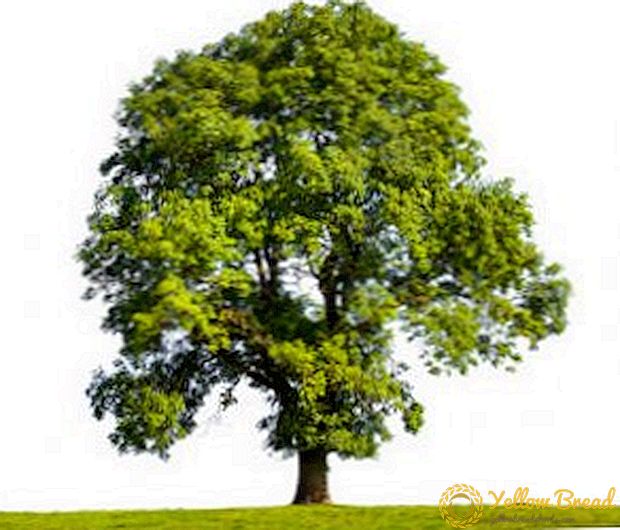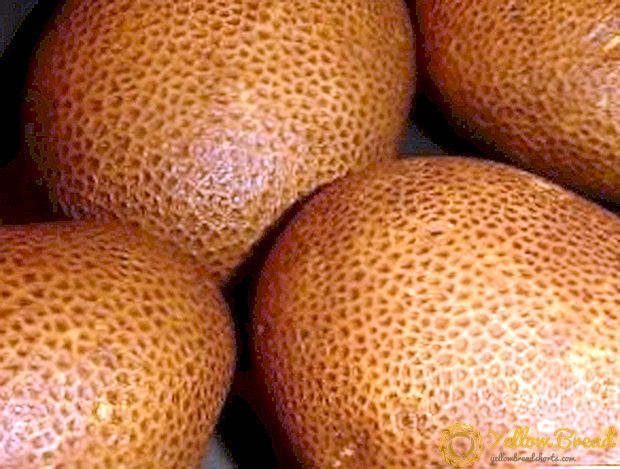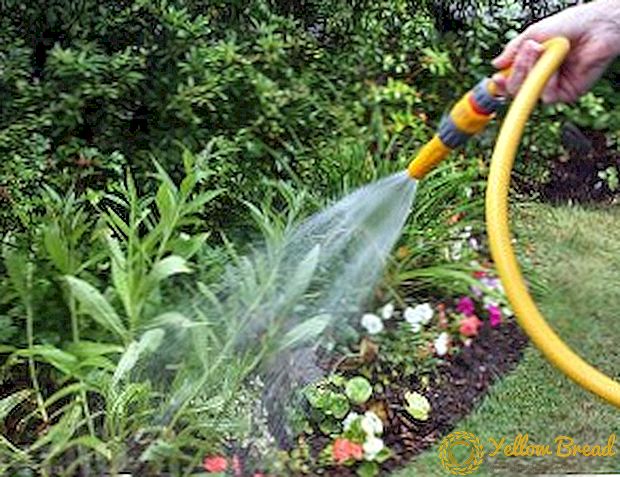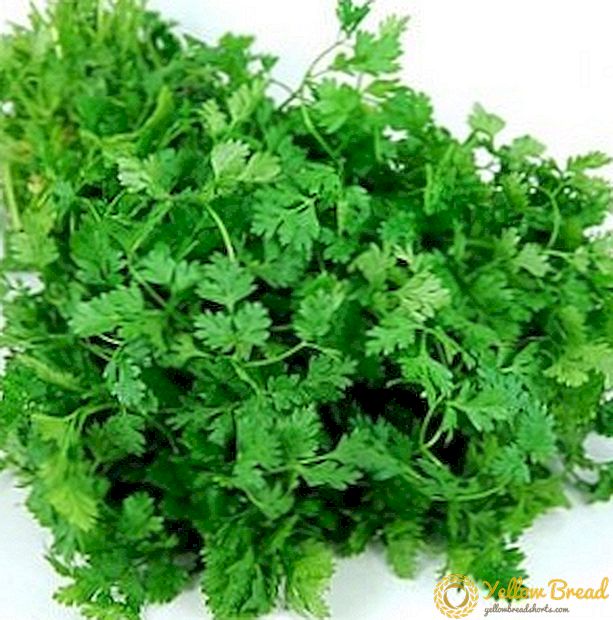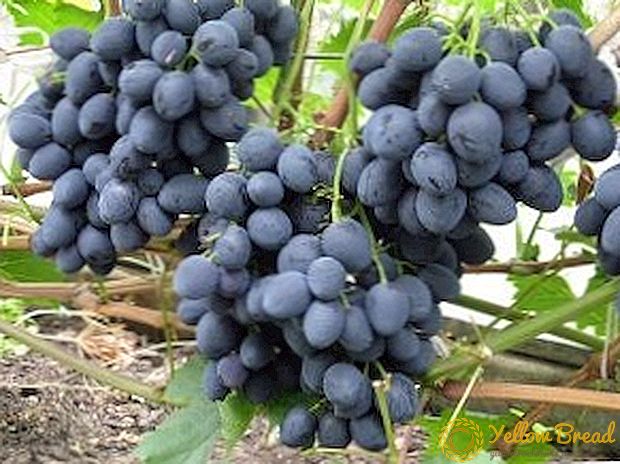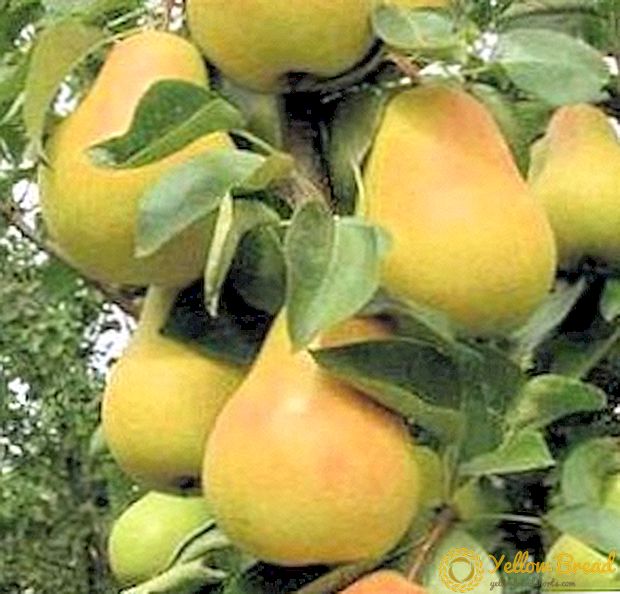 Caring for shrubs on the site is reduced to the usual work for gardeners. But some of them still present difficulty for beginners. This applies primarily to the processing and removal of branches. Such work requires some knowledge, and in this review we will look at how pruning gooseberry looks, when and how to do it correctly.
Caring for shrubs on the site is reduced to the usual work for gardeners. But some of them still present difficulty for beginners. This applies primarily to the processing and removal of branches. Such work requires some knowledge, and in this review we will look at how pruning gooseberry looks, when and how to do it correctly.
- Why do gooseberries pruning
- When to prune
- Garden tools for work
- Pruning gooseberry bushes depending on age
- In the first year
- In the second year
- For the 3-4th year
- 5 and more years
- Trimming gooseberry bush
- Non-standard ways of forming a bush
- Tapestry
- Stambov
Why do gooseberries pruning
In general, everyone knows the answer: if you do not follow the bushes, they will quickly turn into thickets. Indeed, the gooseberry for the season makes a lot of shoots that need to be streamlined.

There are others the reasonswhich make this manipulation necessary and regular:
- Heavily overgrown bushes become impenetrable to light, which creates all the conditions for the emergence of diseases and pests.
- With the dense interlacing of the branches, the berries become smaller.
- The more branches - the less nutrients each shoot gets separately. As a result, yield decreases.
- Too long branches with growth simply fall down on the ground and take root. After a year or two, such a "giant" ceases to bear fruit and becomes dangerous for other crops: pests settle on the shoots and leaves.
When to prune
Gooseberry pruning is considered the most effective in the spring, before the vegetative season begins. Forming more "sleeping" branches in the first decade of March, you will ensure the normal growth of the gooseberry and thus "lay down" in such a way a good harvest.
But there is one difficulty: sap flow begins very early, literally with the first spring rays of the sun. “Catching” the right moment and getting to the dacha in time is not possible for everyone, and at the end of March - beginning of April, young leaves are already visible. So you have to wait until autumn.It is undesirable to make slices "live", it harms the plant.
The most popular option is pruning at the end of the season, which is carried out after leaf fall. This event can be called a sanitary sanitary: the necessary branches are “exposed” and excess shoots are removed. First remove the horizontal and oldest (they are almost black in color).
Garden tools for work
Some simple fixtures are needed: pruner and lopper. They are simple, but there are some nuances here. For example, pruners come with single or double sharpening. The first are the most simple, similar to scissors, appliances. One of their blades serves as a stop, while the second - the cutting edge.

Everyone knows how difficult it is to cut a powerful branch with shears. For such purposes, use devices with a ratchet mechanism that regulates the position of the blade and its progress. Loppers remove thick (3-5 cm) thorny branches.In fact, these are the same secateurs, but with long handles. It is easier to work with them - the handle performs the role of a lever and transfers a great effort to the blades, preventing the hands from getting tired.
There are also brush cutters, but there is one drawback: they “take” a maximum of 25 mm, and models with one-sided sharpening are even less. In our case, they are suitable only for young bushes.
Instrument requirements are as follows:
- high-quality sharpening, there should not be any chipping on the edge;
- low weight;
- the opportunity to work with great effort;
- comfortable grip; the material from which it is made does not matter, the main thing is that it should have rubber inserts that prevent the hand from slipping;
- narrow ends that do not damage adjacent branches;
- safety and bright color - such a device is easy to find in the thickets.

Pruning gooseberry bushes depending on age
The amount of work and its character is estimated with an eye on the age of the shrub. For different periods, only “their own” trimming techniques are suitable, which we will now consider.
In the first year
It all starts before landing. On a young sapling shorten all shoots. On strong branches leave 3-4 buds from soil level, on weaker growths, 2 is also enough. It happens that ramifications due to carelessness are damaged. They are already unpromising, such cut out immediately. But it already weakens a little bush. This pruning is aimed at proper nutrition of the bush and the formation of future skeletal branches.
During the season, the roots will grow well and repulse new healthy branches. Autumn "intervention" in the first year after planting is minimized - inspect whether the branches are healthy and leave 5-6 annual shoots for wintering.

In the second year
In the spring, up to 5 zero shoots are left; these should be healthy, conveniently located processes. Weak branches, not reaching 20 cm, cut off completely.This is necessary - small increments during the growing season only overload nutrients to themselves, taking them away from more developed ones.
To stimulate branching prune strong branches growing vertically (approximately to the level of 30 cm from the ground). The same applies to slightly tilted processes. But the horizontal branches are removed without regret - no garters will not help here.

For the 3-4th year
This is a time of rapid growth.
In the 3rd year, all weak and horizontally runnings are removed. If there is poor growth and unimportant branching, the remaining ones “revive”, shortened by 12-15 cm. By the end of the third season on a healthy bush there should be 12-18 branches of different age. This is the main "skeleton" of the shrub.
On the 4th year after planting, the gooseberry is already formed, and pruning becomes more moderate. It comes down to the complete removal of young shoots, including those that have been started from the root collar.Closer to winter, the bush takes on a beautiful raised look.
5 and more years
The "Five-Year Plan" is the peak of yield, when there are up to 30 branches of different ages. With such a load the bush is already difficult to handle.
Here important rejuvenation. In the spring, the bushes are thinned, removing all the thin twigs and leaving only strong basal. There is another, more radical method for very "age-related" plantations: they leave only 5 of the most powerful branches, removing all the others. With normal care, such bushes will form anew.

As you have noticed, the works described above are carried out mainly in the spring. No less important is the autumn pruning of the gooseberry. Here are its basic rules:
- Lighten the bushes.Gooseberry, receiving light in abundance, gives large and tasty berries. Lingering with thinning, you risk "run" powdery mildew on the bushes.
- Trimming is done from the bottom. It is from this place that old shoots are cut (over 5 years). If the bush looks "plucked", do not be afraid - in the spring it will again grow.
- On old plantations young shoots are removed. Too many of them will lead to their "infertility" or the appearance of small berries.
- Green tops are cut off. They are unlikely to survive the winter.

Trimming gooseberry bush
Gardeners often abandon the processing of obsolete bushes. Yes, and there are different situations - for example, for 1-2 years of absence of the host, relatives do not pay attention to the gooseberry, and it is thoroughly thickened.
- In the spring, even before the start of the growing season, all weak, sick, broken and low-yielding branches are removed. They especially thickened the base of the bush, where the shoots are like brushes. Out of all this mass, we will leave 5-6 strong “annuals”.
- If the rescue began in the fall, try to remove even the most "age" branches before the frost. They are darker than the rest and are removed at the base. This ensures the growth of fresh shoots in the spring.
- Be sure to clean dry branches.

Non-standard ways of forming a bush
We already know how standard (aka “classical”) pruning is carried out. But there are other forms of formation that are worth mentioning.
Tapestry
For growing vigorous varieties with a large number of shoots, trellis are prepared. Here is the sequence of such a process:
- Seedlings are placed according to the scheme: 1.5 m between the rows and 60-70 cm between the bushes.
- Between the rows with an interval put support (tubes, thick rods or branches).In 3 rows stretch the wire. The first line - 50 cm from the ground, the rest - 80 cm and 1 m.
- Strong branches are tied to the finished lines (up to 5 pieces), maintaining an interval of 20-25 cm.
- The annual pruning comes down to removing the tips of last year’s shoots by 1/3 (less often - by half). Leave 4-5 seasonal shoots, not giving thicken.
- As aging makes rejuvenation of the bush.

Stambov
In a nutshell, this is a method of turning a berry into a tree. The work is also quite laborious, but it is worth it: the bushes look more elegant, it is more convenient to harvest, and care is easier - you do not have to deal with prickles every time.
The scheme of such cultivation is as follows:
- At the bush is selected the most powerful vertical shoot, which will be the "trunk".
- Pick up the shtamb desired height. Usually it is 1 m. It is up to this level that all the lower branches on the trunk are pruned. Some people wrap it with a meter-long piece of film or insert a tube that does not transmit light - this will eliminate the need for trimming at the base.
- The plant is immediately tied to a peg.
- In the following years, 4-5 strong “seasonally” branches are left, with the last half being cut by half. Patients that are horizontal, broken, or old (7 years or more) are removed. The same applies to shoots that appear at the base.

We already know about the advantages of this method, but it also has disadvantages. The first is the age of such a “tree”: one escape is taken, but it is aging, and 12 years for the stem shrub is the limit. Let's add here and possible problems during the wintering season - only frost-resistant varieties are suitable. Well, labor costs are a bit higher: you will have to “fit” the pegs and stands several times during the season.
You saw how to work with gooseberries, so that it pleases the eye and gives great harvests. Now pruning does not represent any secret for our readers. Successes in the country!

